*NURSING > TEST BANK > NURS 3365 Test Bank Chapter 2- Cellular Responses to Stress, Injury, and Aging (All)
NURS 3365 Test Bank Chapter 2- Cellular Responses to Stress, Injury, and Aging
Document Content and Description Below
1. Which of the following clients would be an example of cellular atrophy? A) A middle-aged female experiencing menopause due to loss of estrogen stimulation B) A postnephrectomy client whose remain... ing kidney enlarges to compensate for the loss C) A hypertensive, noncompliant client who has developed a progressive increase in left ventricular mass D) A female client with the change in uterine size as a result of pregnancy Ans: A Feedback: In women, the loss of estrogen stimulation during menopause results in atrophic changes in the reproductive organs. Compensatory hypertrophy is the enlargement of a remaining organ or tissue after a portion has been surgically removed or rendered inactive. For instance, if one kidney is removed, the remaining kidney enlarges to compensate for the loss. In hypertension, for example, the increased workload required to pump blood against an elevated arterial pressure results in a progressive increase in left ventricular muscle mass and need for coronary blood flow. The pregnant uterus undergoes both hypertrophy and hyperplasia as a result of estrogen stimulation. 2. A client has experienced significant decreases in mobility and stamina during a 3-week hospital stay for the treatment of a femoral head fracture. Which of the following phenomena most likely accounts for the client's decrease in muscle function? A) Impaired muscle cell metabolism resulting from metaplasia B) Dysplasia as a consequence of inflammation during bone remodeling C) Disuse atrophy of muscle cells during a prolonged period of immobility D) Ischemic atrophy resulting from vascular changes while on bedrest Ans: C Feedback: Disuse atrophy frequently occurs as a consequence of prolonged periods of muscle inactivity. Metaplasia and dysplasia are not common consequences of immobility and muscle disuse. Similarly, infrequent muscle use does not typically cause vascular changes that result in ischemic atrophy. 3. The client is found to have liver disease, resulting in the removal of a lobe of his liver. Adaptation to the reduced size of the liver leads to which phenomenon in the remaining liver cells? A) Metaplasia B) Organ atrophy C) Compensatory hyperplasia D) Physiologic hypertrophy Ans: C Feedback: Compensatory hyperplasia can be stimulated in response to loss of vital tissue that is capable of regeneration, such as liver cells. Metaplasia involves replacement of one existing cell type with another fully differentiated cell type. Organ atrophy is caused by irreversible loss of cells. Physiologic hypertrophy is increased size of existing cells resulting from increased workload. [Show More]
Last updated: 1 year ago
Preview 1 out of 12 pages
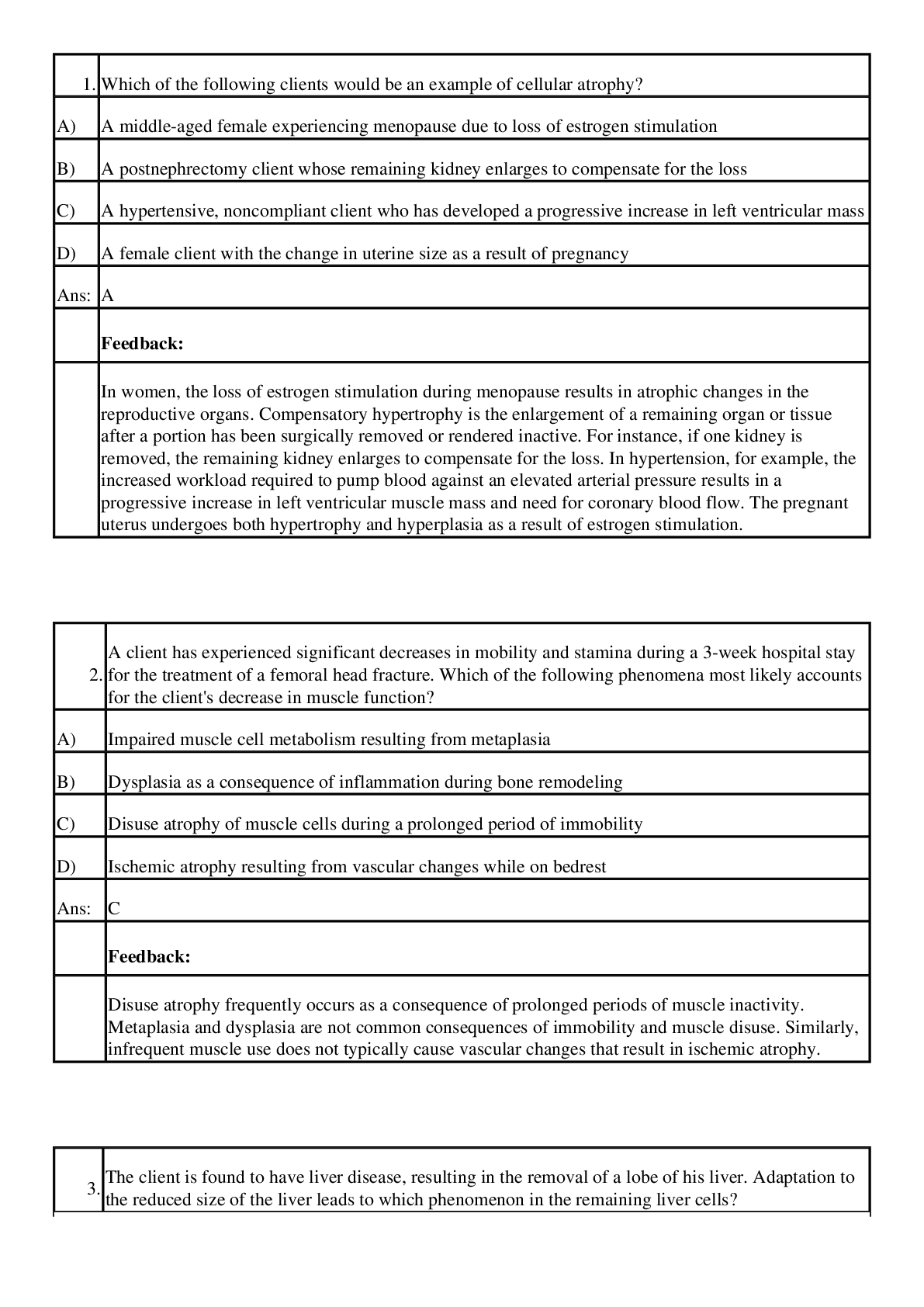
Reviews( 0 )
Document information
Connected school, study & course
About the document
Uploaded On
Dec 15, 2020
Number of pages
12
Written in
Additional information
This document has been written for:
Uploaded
Dec 15, 2020
Downloads
0
Views
47

.png)
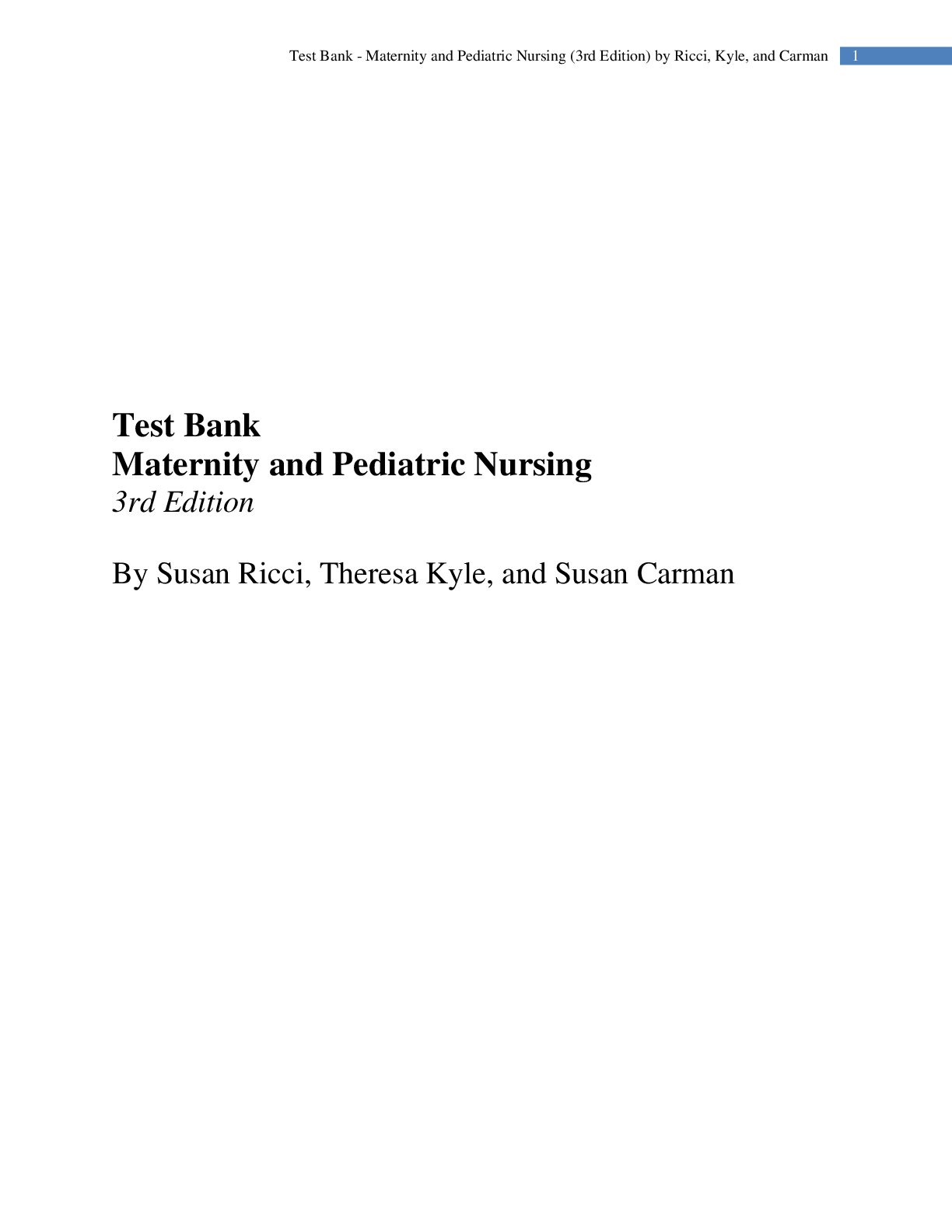

.png)


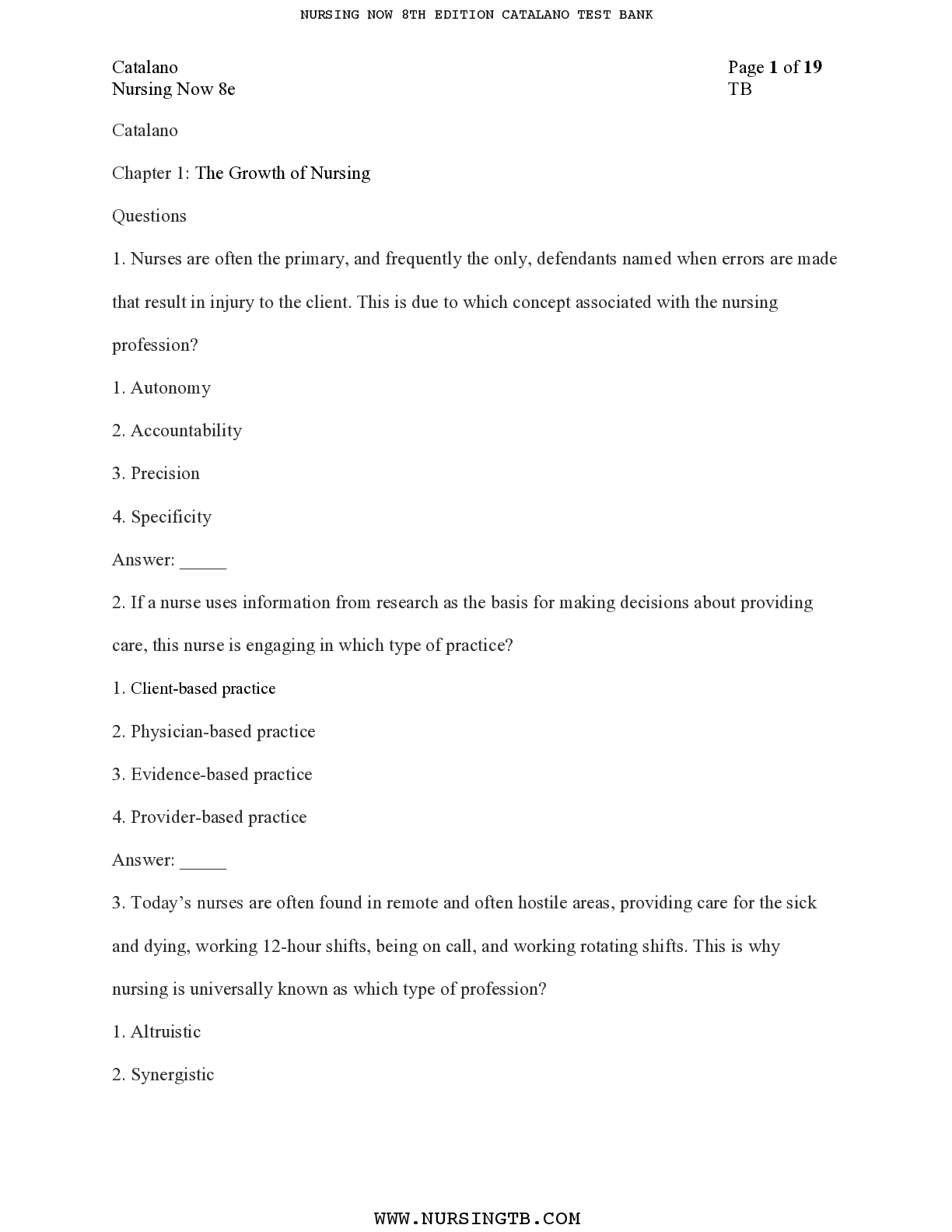





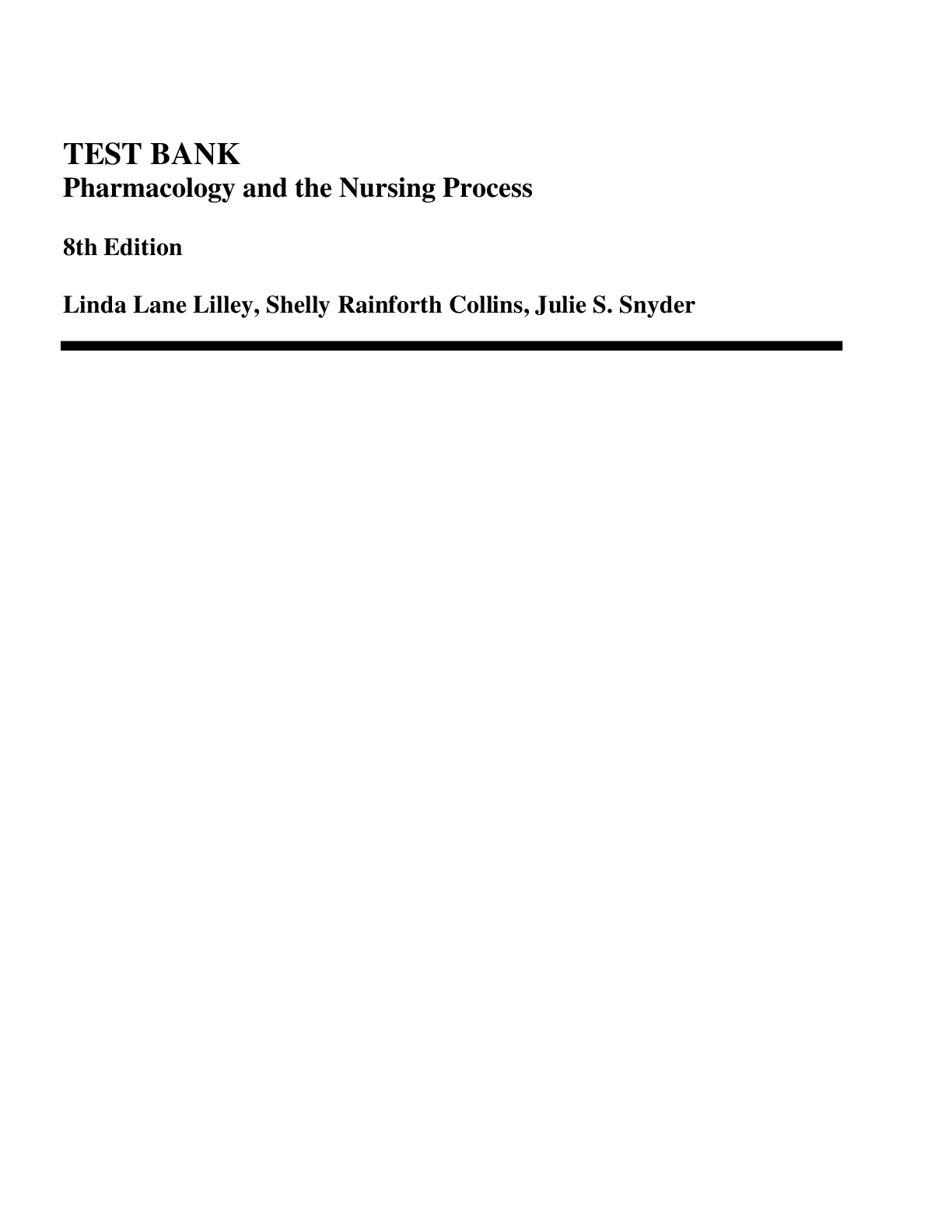


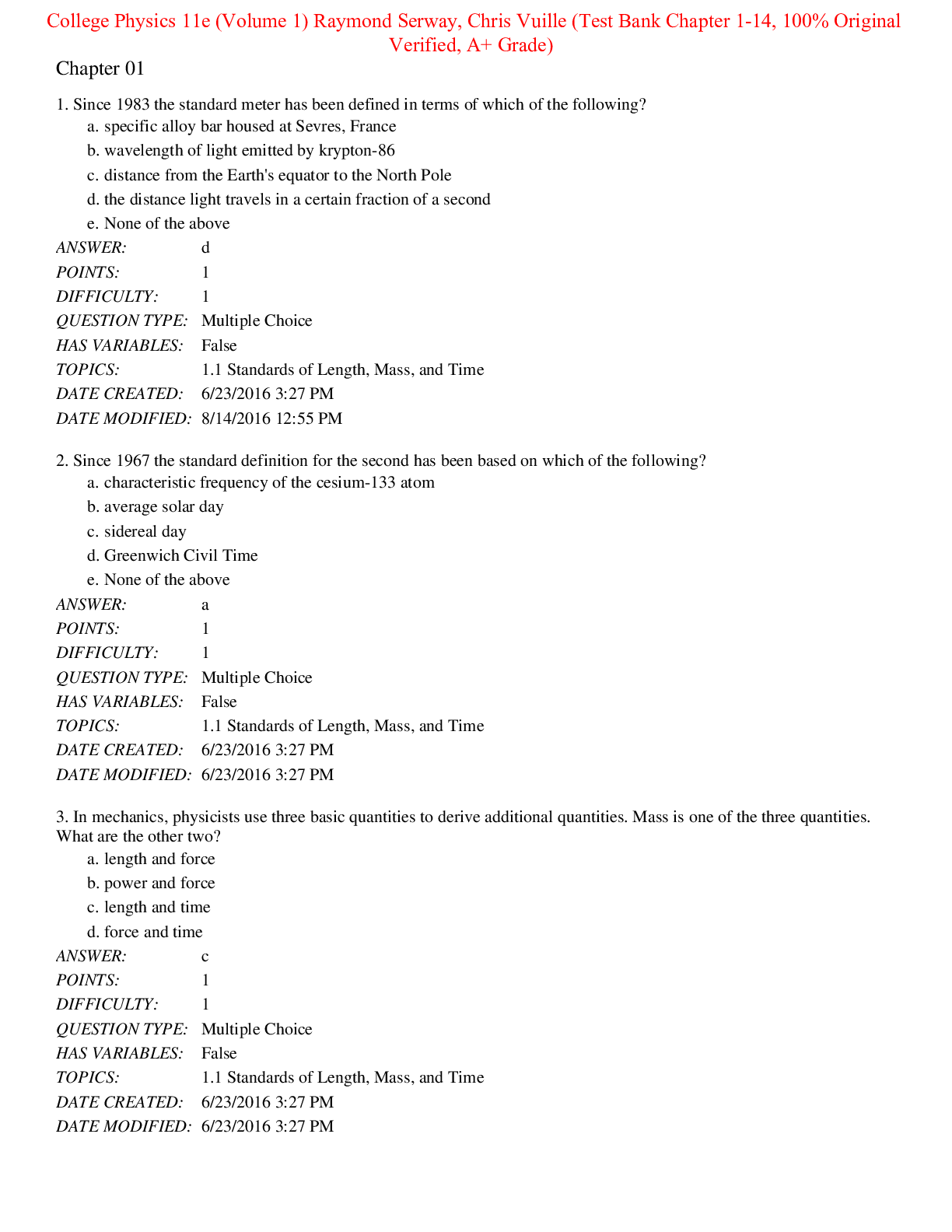
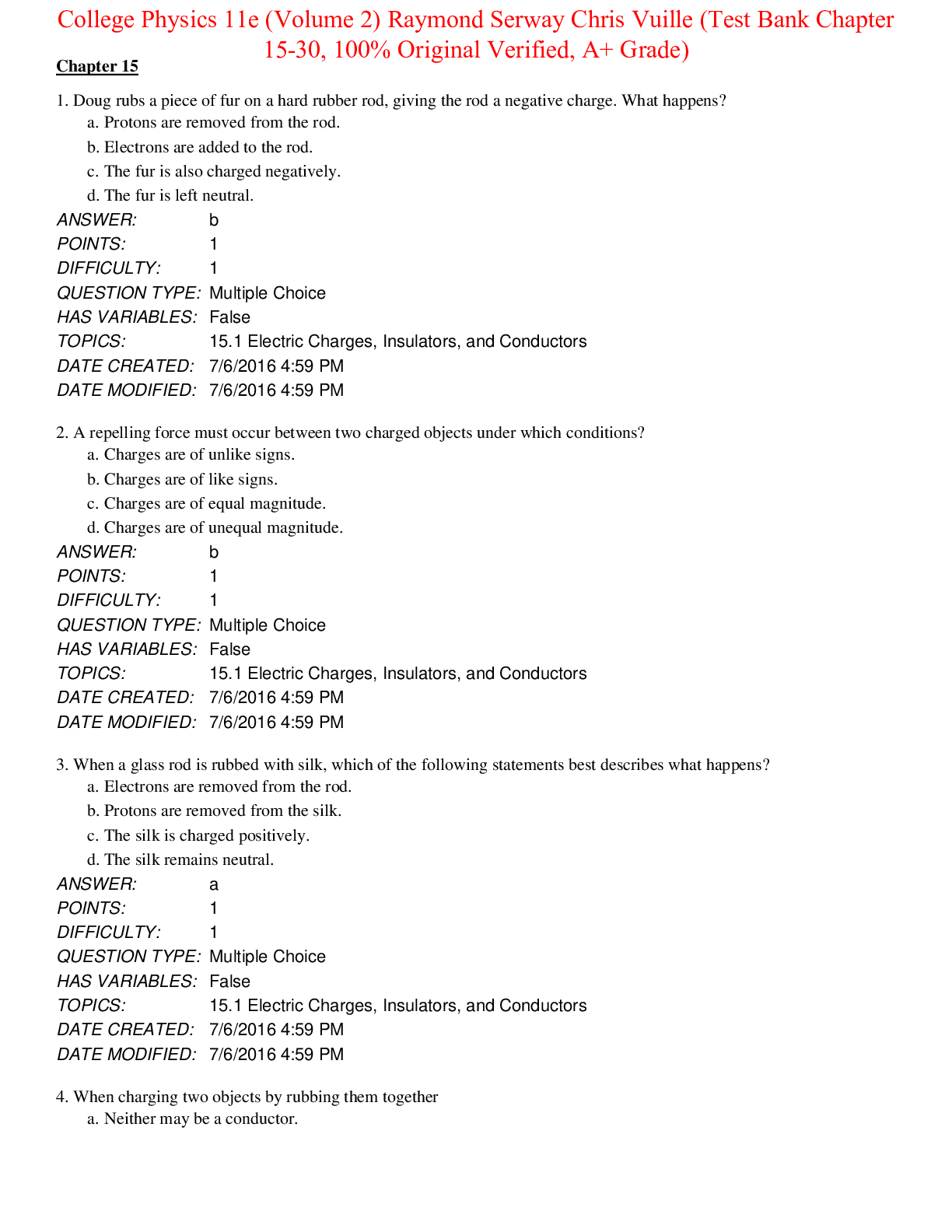

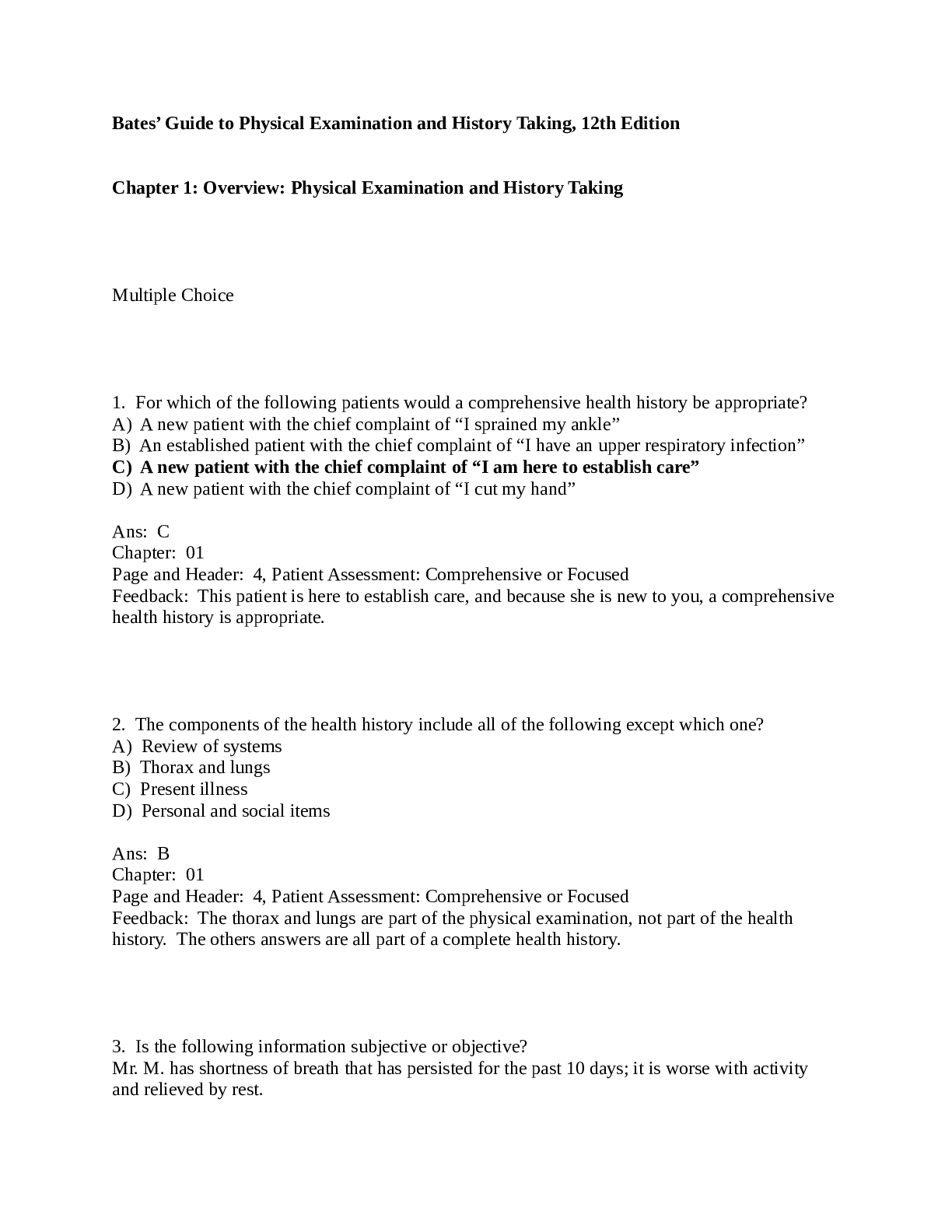

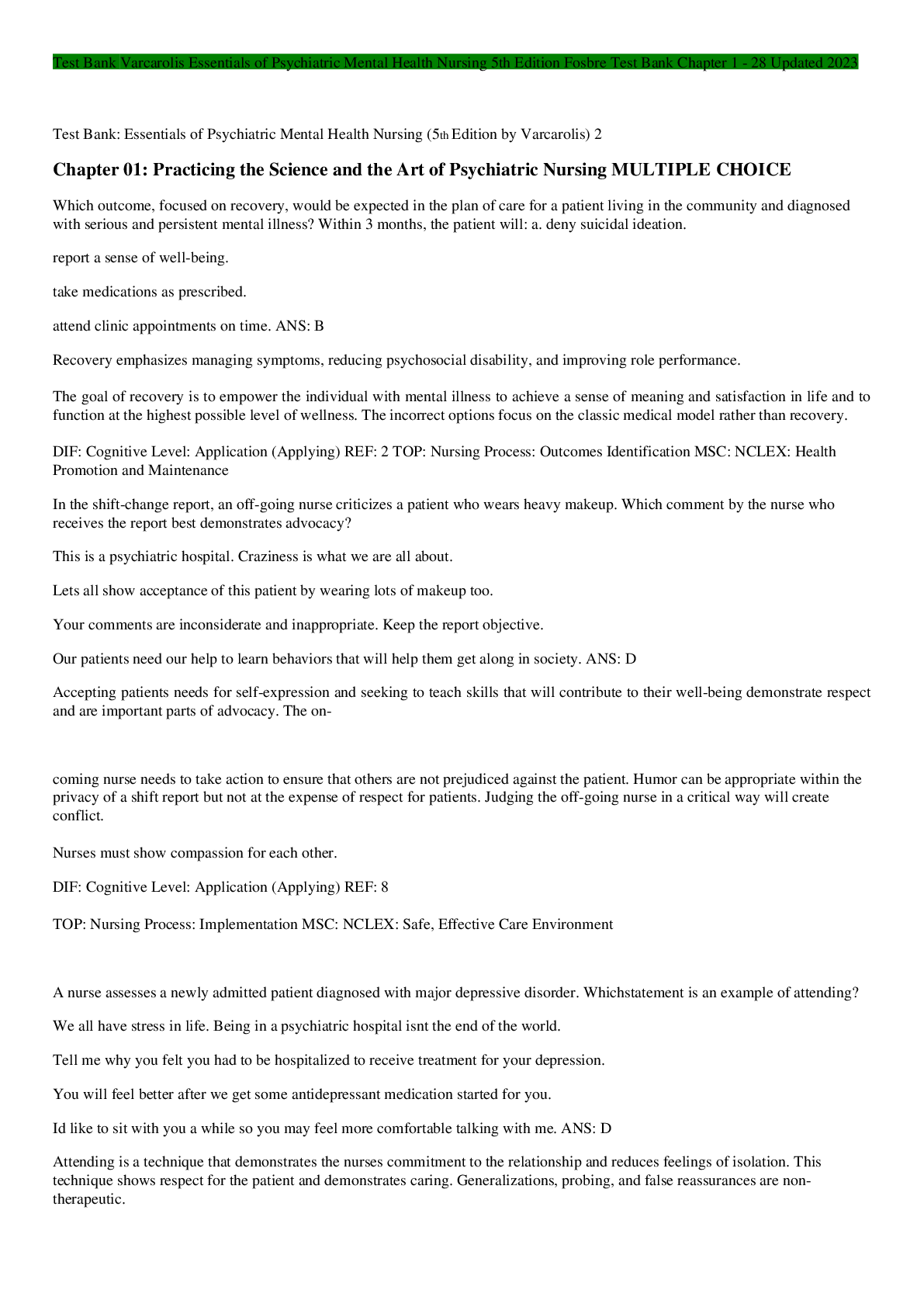

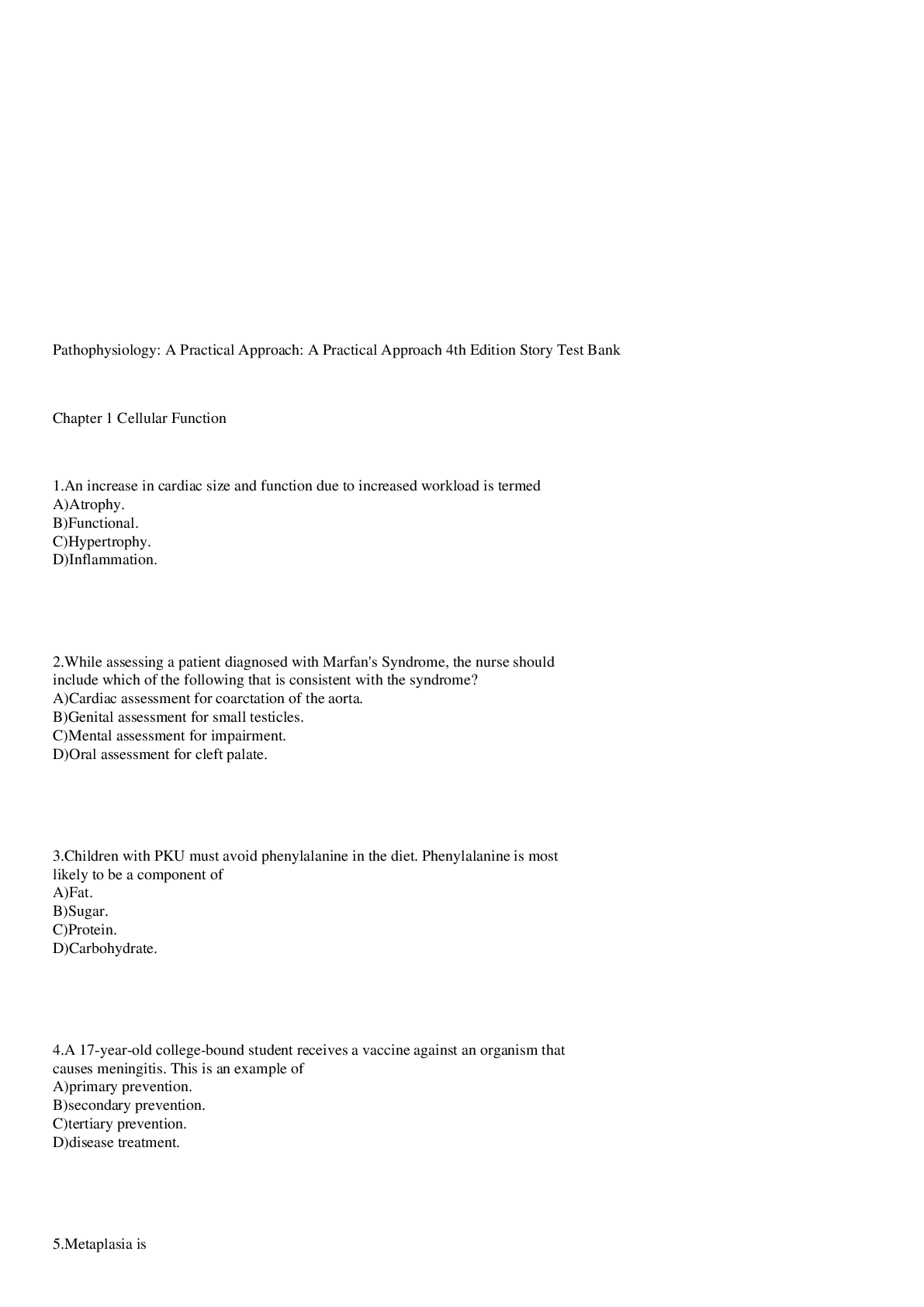

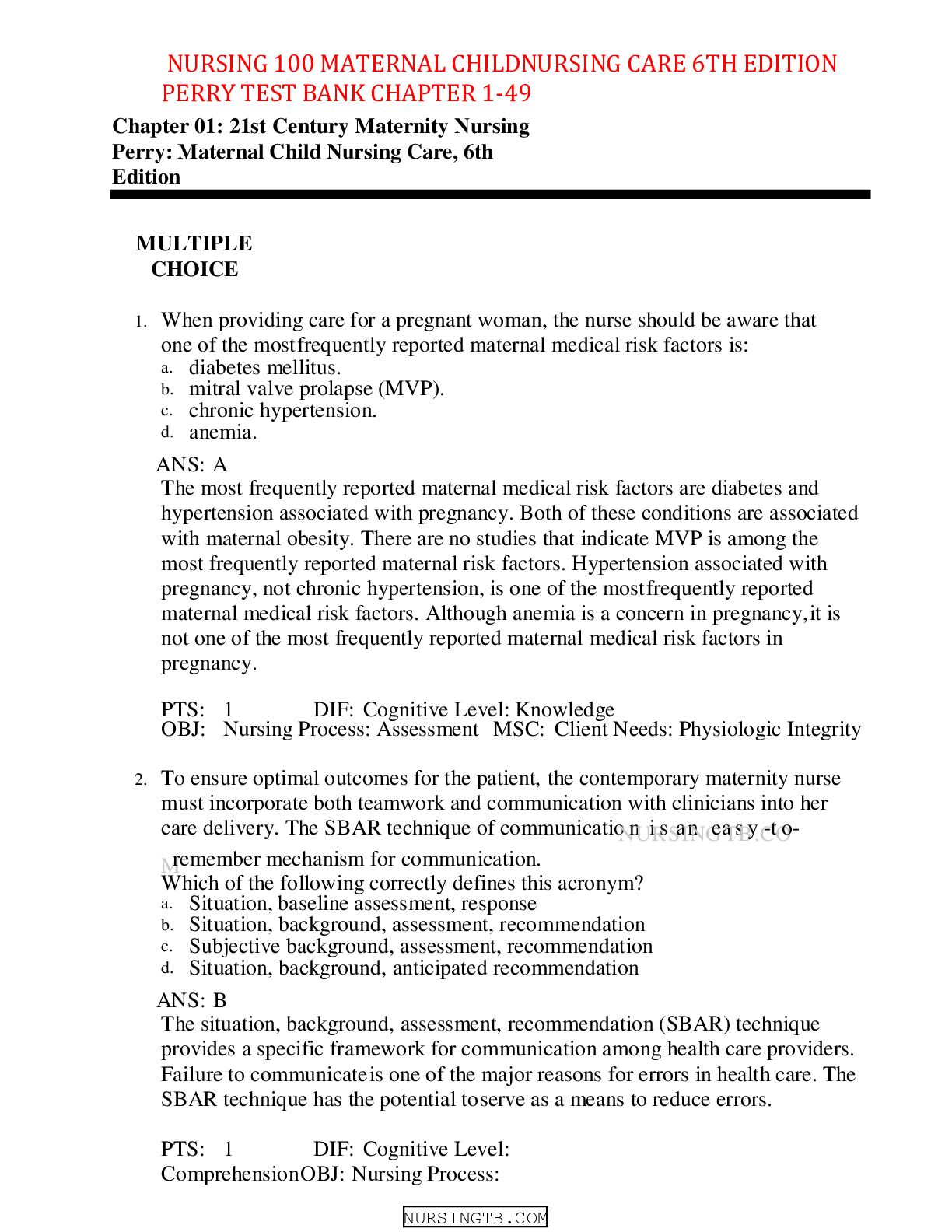
.png)







 (1).png)


